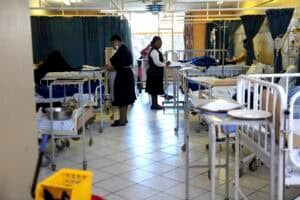Zweli Mkhize provided a breakdown of South Africa's efforts to tackle the spread of the coronavirus as well as plans for the road ahead.

On Monday, Health Minister Zweli Mkhize, accompanied by various experts and the chairperson of the ministerial advisory group, Professor Salim Abdool Karim, took the public into their confidence and provided a breakdown of South Africa’s efforts to tackle the spread of Covid-19, as well as plans for the road ahead.
Here are some important points Karim made:
1. South Africa’s unique trajectory
The trend in Covid-19 infections in South Africa has taken a unique path, unlike that of other countries, Karim said.
Before the lockdown was implemented on 26 March, South Africa experienced an exponential curve, meaning that there was a rapid rise in cases. But, on that date, instead of seeing the curve continue, it was somewhat flattened.
A decline in the daily rate of cases occurred, followed by a plateau in the curve.
“Not a single country that we’ve seen has this kind of turn,” Karim said.
2. Testing is increasing
As the rate of infection plateaued, the number of tests conducted increased, Karim said.
While a lack of testing makes a small contribution to South Africa’s unique trajectory, a major factor is due to a “genuine effect”, Karim said.
This reduces the possibility that a lack of testing caused a “false” flattened curve.
3. The lockdown has been effective
More likely, Karim explained, the rate of infection declined because the lockdown reduced the opportunities for the virus to spread in communities.
A first wave of infections brought about by international travellers led to a second wave of community transmissions. However, Karim explained that this, surprisingly, did not lead to an exponential growth of infections.
Instead, South Africa’s community transmissions are not “spreading like wildfire”, creating a unique curve.
Preventing a rapid community transmission and flattening the curve is what the government has been aiming to do with various interventions, including handwashing, social distancing and the implementation of the lockdown.
4. Government concerns
Aggravating factors for community transmissions are high-density hubs where there is a high potential for the spread of the virus.
These hubs include Johannesburg, Cape Town and eThekwini.
5. What’s next?
Although it’s a best-case scenario, it is highly unlikely that the virus will simply disappear, Karim said.
What’s more likely, is that once the lockdown ends, there will be an exponential growth in infections.
Despite the success in stemming the spread of Covid-19 in communities, Karim said the “difficult truth” remained that an exponential spread of the virus was unavoidable.
“We cannot escape this epidemic.”
6. The good news
Government interventions have delayed a potential disaster.
“If we allow it to grow unchecked, you will see what we see in New York – thousands of people trying to get into a hospital for cases, and we simply do not have enough ICU beds or ventilators or medical care.
“We simply cannot provide care to so many people at one time, so that is the challenge we might face,” Karim said.
We now have time to truly flatten the curve and South Africa is in a unique position to deal with Covid-19.
“We chose to be proactive; we have chosen to go out there and do active case-finding.
“We are not going to wait until people come into the hospital sick. We are going to go into the community. We are going to find them before they get into a hospital.
“Only South Africa has done this,” Karim said.
This delay has also bought South Africa time to find new diagnostic tools and get new treatments and vaccines.
7. Vital week ahead
Everyone needs to follow the lockdown rules while the government monitors community transmission, Karim said.
If the average number of day-to-day cases increase between 10-16 April, the lockdown will continue.
Should this average stay the same, the government will use active case-finding to determine whether to continue with the lockdown.
8. National surveillance day
Karim announced that once a month South Africa will have a national surveillance day during which a 5% sample will be collected from a small number of schools, mines and companies.
The number of samples and tests could be increased if the government sees fit, Karim said.
9. Concerns
Within the government’s medical care response, access to healthcare is limited for poorer communities.
Millions of patients who have underlying health conditions, like HIV/Aids, are also a concern because they are vulnerable to infection.
South Africa’s Covid-19 epidemic will occur at the same time as the flu epidemic, making it more confusing for people to distinguish between flu and Covid-19.
The elderly, particularly those older than 70, are also a concern.
“We need to think about whether it is possible to have some kind of partial lockdown – and it can be a voluntary partial lockdown – until the end of September, when we think the wave of this epidemic will be over,” Karim said.
Finally, Karim added that medical staff would be prepared for the exponential curve. This means getting ready makeshift ICUs, ventilators and personal protective equipment – a challenge dealt with worldwide.
For more news your way, download The Citizen’s app for iOS and Android.






